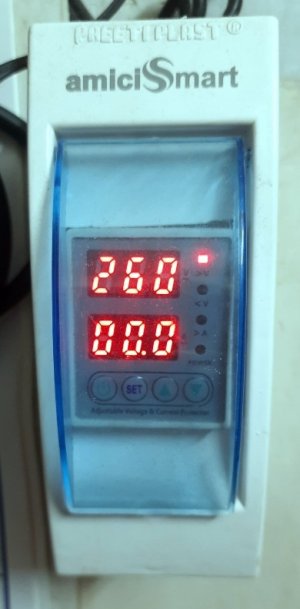My computer SMPS was one of Adani standard earliest victim. Luckily computer SMPS are standardized. Got one corsair from Amazon and replaced it. I think this costed around Rs 2000 or so. Other things that conked off were
1. RO water purifier SMPS. Got it replaced. I must have paid around 2000 or so
2. Allo shanti fuse. Allo shanti comes with a spare fuse in a hidden receptacle.
3. Iphone charger
4. Yamaha avr SMPS. The official repair center were quoting an attrocious price. They wanted to replace the entire board. I did some troubleshooting and found the culprit. IC 254 smps ic. I think this costed me less an Rs 200 or so. Don't remember exactly. But I have made a post on hifivision somehwhere. The max voltage this IC can withstand is 265 volts which is just around the max Adani voltage of 264 volts. Plenty of AVR's use this IC family (IC 254, IC 258, etc) Marantz, Denon, etc. They all have max voltage rating of 265 volts in the spec sheets. They are highly at risk from the current voltage which allows 240 +10% = 264 volts. Using a voltage stabilizer or a UPS before avr in India is highly recommended.
Now I have done the following.
1. Two AC voltage stabilizer in the kitchen. They protect microwave oven, washing machine, dish washer and cloth dryer.
2. Two tiny voltage stabilizer in the kitchen. One for fridge and one for the RO purifier
3. One AC stabilizer in my music room for all equipments and large plasma tv. Installed one cut out like the one
@Sean de Silva has
4. One APC ups in my music room for my HTPC and Raspberry PIs.
5. One AC stabilizer + APC UPS for my son's room to protect laptops, computer, LG tv and Sony Playstation
6. One vguard stabilizer for Hinsense TV and one small cheap computer UPS (chinese) for my raspberry PI and cell phone, laptop charger in master bedroom. Almost all UPS have built-in voltage regulation inside, even the cheap chinese ones.
7. One AC stabilzer in guest room. All outlets are coming from stabilizer output.
Overall I think I have spent < Rs 20000 on stabilizer plus high voltage cutout plus some electrical work that I did myself. I'm safe now and not lost a single equipment since 2020 Nov or so


